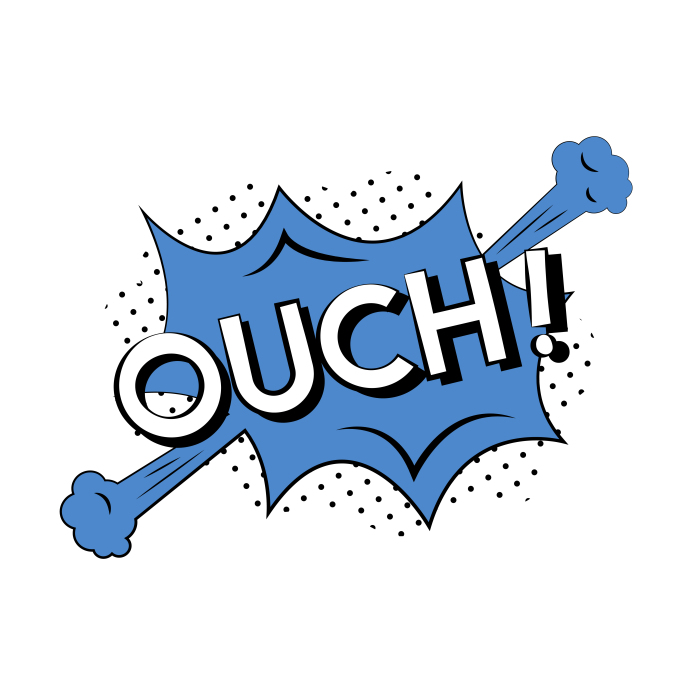Allow me to interrupt the series of posts where I have been retelling the story of my 2018 NYC Marathon experience to process the unfortunate circumstance of my first ever DNF on 3/9/19 at the Black Cat 10 Miler.

My mind is swirling, and my right foot isn’t working. It feels like something has erupted where my heel pad meets the arch of my foot. I had felt a twinge of pain around mile 3, which pulled me off of my goal pace of 6:50 or better. However, after backing off for a few, the pain subsided while I managed to hit a couple of 7 min miles. At this point, it was mile 5, and I knew I had lost ground, so it was time to start the push again. I reeled in the pace and brought myself to another 6:50. Then, I entered mile 7 with a BLAST: the sensation of an eruption in that same foot. My wife was on a bike, and she passed by on the course. Noticing my body language and assuming it was just the normal race fatigue, she told me in her firmest tone, “Dig deep. Breathe and pick it up.”

At that moment, I hadn’t reconciled the extent of this injury. I was hopeful that it would go away. So, I did my best to press on and landed another 7-min mile. Too slow, but at this point, I was doing a body check and realized that my left foot was responsible for most of the ground that I was covering at that pace. My right foot seemed to have gone limp, and while my leg muscles kept turning over, my right foot was slapping and not allowing me to toe-off. My cadence is often up around 200 steps per minute when I am racing. Therefore, it was 100 excruciating slams for every minute that I continued. Then, at mile 8, I clocked another 7-min mile while my mind and body were screaming. Luckily, I was able to gather up some logic as I was about to pass the garage where my car was parked. Then, for the first time, I stopped. I have never had a DNF, and I still wasn’t exactly sure that today was that day. I saw my wife up ahead and waved to her. She rode over with legitimate concern, as I could not walk on that foot.
Here I am, in the middle of a busy intersection, limping around and still thinking, “I can shake this and finish.” Standing on the corner with a raging case of denial, I kept saying, “I can do this. Let me try again.” Yet, the pain did not allow me to take a step. Maggie was, of course, telling me that I am nuts and injured. The marching orders were to stop and head to the car.

It was such a weird and terrible time in my mind and body. I went from racing to a complete standstill. There was no cooldown or stretch. The next thing I knew, I was in the car and traveling home. Luckily, I live just two miles up the road. Shivering and going numb from my Raynaud’s, I got right into the shower. My foot swelled up, and I lost my range of motion with pain from even the slightest pressure to touch or bear weight. What had happened?
Before I go there, let’s take a minute to talk about pain thresholds. As a competitive runner, I practice getting comfortable with the uncomfortable. I train my pain tolerance to reach new heights, and I test myself to find the redline. It is a risk, but a calculated one for the most part. Enter my go-to motivational phrase these days: I want it more than I am afraid if it.
To separate the mental from the physical, I often ask myself this question when the going gets tough: will it hurt THAT much more to go a little bit faster? Sometimes, I try, and the answer is HECK YES, but often, the answer is NO. Then, I push the pace and ask again. The reality is, my body and brain are at odds in every race. I am constantly fighting the urge to stop because my brain is sending me signals to tell me, “HELLO! This is incredibly uncomfortable! Something must be wrong!” It is amazing what the body can endure when you enter that mode. I have trained myself to ignore this plea and stay focused. After all, what is the worst that can happen?
Well, I suppose it is THIS.
Of course, the worst that can happen is that I will die. But I don’t go there; that can happen any day at any time. Instead, the “real” worst thing is precisely what happened to me on 3/9: unexpected trauma from an acute, race ending, and run-stopping injury.

This is not my first time facing an injury. However, it is the first time that I faced an injury that is disruptive to both my running AND my life. In the past, I have been able to walk through ITBS or PF. I have used PT to get me through rehab and back to running. This time, I am on crutches and dealing with the unbearable wait for MRI results. The timeline was: INJURED on 3/9. ER and Xrays on 3/9, suspected plantar rupture. First attempt at orthopedic visit 3/11, ended up seeing a PA. After a recommendation from my coach, I saw another doctor, 3/13. MRI ordered and set for 3/18. Review results with Dr. on 3/20. All in all, TEN days until I got the final truth on what happened to my foot. Sprinkle this timeline generously with tears, frustration and a serious lack of endorphins to reach the final verdict:
First, the bad news: I tore my plantar. While I am allowed to put up to 20% of my body weight on the right foot, my total time on crutches will be a long SIX weeks (taking me to approximately April 20th). I will have to give up my USATF Master’s 10k Championship race on April 28th. I will have to forego my goal of getting back down to my half marathon PR (1:25) for the Run to Remember in May. There will likely be no racing for me for a while. Now, the good news: It seems that based on the location of the tear, the prognosis for full recovery is optimistic. My plantar has not detached from the heel bone and should allow my foot to get to 100% in the long term. (I am glad that I stopped when I did at mile 8!) If I can be patient, and use these crutches for the next four weeks to minimize the load on my right foot, then I can hopefully expedite the healing process. In the meantime, I have permission to engage in a decent amount of cross-training to help maintain my fitness. I see a post on the topic of pool running in the near future! My new goal: to lose as little as possible and get back to full training by summer. NYC 2019 has not been erased from my race calendar.

It takes guts to have lofty goals: the kind that scares and exhilarates you all at once. I have written before about my ongoing battles with anxiety and depression. Even now, it tries to prevent me from buying into the “good news.” My so-called “monster” will keep trying to tell me that it will be easier to let it all go. It nudges me and whispers, “You’re all done. This was never your game. Put the running behind you and face the grieving process. Let’s get back to living a ‘normal’ life.” There are moments when I get swallowed up and feel like I wish I had never found running. The truth is, sometimes it hurts to take risks. However, the memories of what I have accomplished hold more power than that monster. I have to go back there, cross those finish lines in my mind, and relive the emotions of my successes. When I visit those experiences, I feel the swell of the competitor. The part of me that I hadn’t met until running came into my adult life. How could I not be grateful for that which running has brought to me? It has reshaped my world, for the positive, in countless ways- including my self-efficacy. This is just another challenge. I believe in my body’s healing capacity. I can stay focused and engaged in all that will be required to get back to competing. Additionally, I have YOU.
Upon completing the 2018 NYC Marathon, I received many amazing texts, messages, and gestures from friends and family who were invested in and celebrating my success. I realized just how lucky I was to have a team (near and far) pulling for me. Now, that team has been doing the same in my time of need. Once again, I am reminded of how many people understand what this means to me and care enough to reach out to offer kind words, support, company, and help in any way possible. I have coaches who are ready to plan out the best possible cross-training regimen that will allow me to maintain fitness safely while I rehab. I have a PT who is prepared to work with me to expedite this recovery as much as possible. I have a wife who will do whatever it takes to care for me and ride alongside me for the journey. (She will also be the one crying when I hit that goal as I cross the next finish line.) I have a team of people who tell me regularly that I am not just another statistic. They see it and remind me of it when I can’t see the forest for the trees.

I am not “normal.” I am in the small percentage of athletes who, through dedication, determination, and singular focus, will come back to train for my peak performance. I may not be a professional, but I have all I need to take on this challenge. I know it will be a long road full of good days, bad days, and lessons learned. While my tendon is torn, my goals are still intact; they are worth the fight.
It is not over. I refuse to settle. I am ready.

